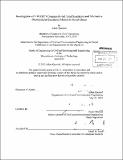| dc.contributor.advisor | Susan Murcott. | en_US |
| dc.contributor.author | Questad, Adam (Adam David) | en_US |
| dc.contributor.other | Massachusetts Institute of Technology. Dept. of Civil and Environmental Engineering. | en_US |
| dc.coverage.spatial | f-gh--- | en_US |
| dc.date.accessioned | 2012-10-26T19:01:25Z | |
| dc.date.available | 2012-10-26T19:01:25Z | |
| dc.date.copyright | 2012 | en_US |
| dc.date.issued | 2012 | en_US |
| dc.identifier.uri | http://hdl.handle.net/1721.1/74490 | |
| dc.description | Thesis (M. Eng.)--Massachusetts Institute of Technology, Dept. of Civil and Environmental Engineering, 2012. | en_US |
| dc.description | Cataloged from PDF version of thesis. | en_US |
| dc.description | Includes bibliographical references (p. 117-122). | en_US |
| dc.description.abstract | 2.5 billion people worldwide do not have access to improved sanitation and Sub-Saharan Africa is not on track to meet the MDG sanitation target. As of 2010, Ghana has achieved 14% national improved sanitation coverage and is not projected to meet the sanitation target by 2015 (WHO, UNICEF, 2012). UNICEF, in partnership with the European Union, developed the I-WASH program to assist in eradicating guinea worm throughout nine endemic districts of rural Ghana between 2007 and 2011. Their proposal included a significant sanitation component that intended the construction of 48,000 latrines over the four-year project duration. However, only 3,100 latrines were constructed after the project completion. UNICEF has since been attempting to validate their projects by switching the goal from latrine construction to Open Defecation Free (ODF) communities created by the use of Community-led Total Sanitation (CLTS). The author observed that only 9% of the villages throughout the I-WASH project area had achieved ODF status as of January 2012; again validating the failure of the I-WASH project to improve sanitation coverage throughout Ghana. By conducting an extensive literature review and interviewing international development experts, local government officials, and members of the community in Ghana, the author investigated the reasons that the I-WASH program was not successful in its sanitation goal. While the field of sanitation is and will continue to be a serious challenge, the author concludes that a link is missing between the community-based subsidy-free approaches (i.e. CLTS) and the low-cost technological solutions that exist. The following represents the main recommendations of the author to assist Pure Home Water, NGOs, and the Government of Ghana to provide improved sanitation coverage throughout Ghana: Increase harmonization between the government, NGOs, communities, and international agencies and donors; Improve the Government of Ghana Environmental Sanitation Strategy and provide strict enforcement of building codes; Increase monitoring of CLTS-triggered communities; Provide low-cost sanitation technology options and/or technical support to CLTS-triggered communities | en_US |
| dc.description.statementofresponsibility | by Adam Questad. | en_US |
| dc.format.extent | 131 p. | en_US |
| dc.language.iso | eng | en_US |
| dc.publisher | Massachusetts Institute of Technology | en_US |
| dc.rights | M.I.T. theses are protected by
copyright. They may be viewed from this source for any purpose, but
reproduction or distribution in any format is prohibited without written
permission. See provided URL for inquiries about permission. | en_US |
| dc.rights.uri | http://dspace.mit.edu/handle/1721.1/7582 | en_US |
| dc.subject | Civil and Environmental Engineering. | en_US |
| dc.title | Investigation of I-WASH's community-led total sanitation and alternative decentralized sanitation models in rural Ghana | en_US |
| dc.type | Thesis | en_US |
| dc.description.degree | M.Eng. | en_US |
| dc.contributor.department | Massachusetts Institute of Technology. Department of Civil and Environmental Engineering | |
| dc.identifier.oclc | 812897717 | en_US |
